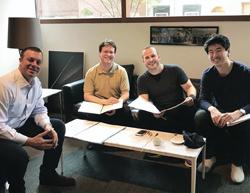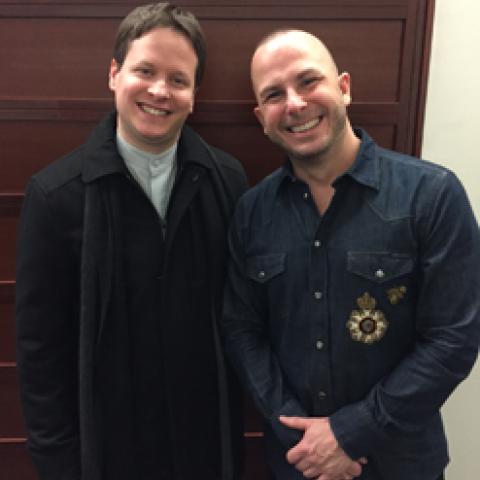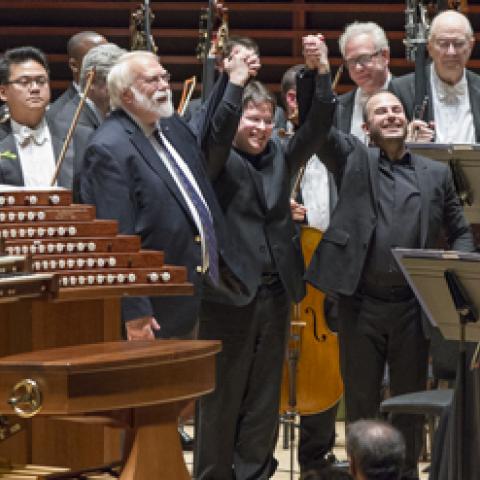
In October, Paul Jacobs was the soloist with the Philadelphia Orchestra conducted by Yannick Nezet-Seguin in the east coast premiere of Wayne Oquin’s Resilience for organ and orchestra.
The work was commissioned by the Pacific Symphony as part of their American Music Festival and received its world premiere on February 4, 2016, at the Segerstrom Center for the Arts, Costa Mesa, California. The work is a 13-minute call and response between organ and orchestra and is dedicated to organist Paul Jacobs and conductor Carl St. Clair.
Pictured are Wayne Oquin (composer), Paul Jacobs (soloist), Yannick Nezet-Seguin (music director, Philadelphia Orchestra), and Kensho Watanabe (assistant conductor).




